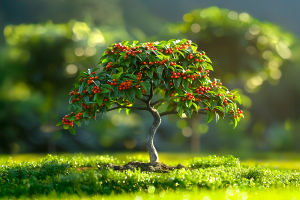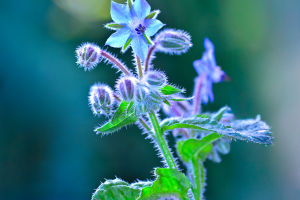If you've ever walked down a city street and caught sight of tree branches draped in enormous, pink blossoms that seem to twirl with every breeze, you've likely met the silk floss tree (Chorisia speciosa).
From a distance, it can feel like the trees are putting on a quiet performance—skirts swirling, colors flashing, petals bowing toward the pavement. Yet the beauty of the silk floss tree is more than just visual charm.
It's a masterclass in how plants use movement, color, and even their own structural quirks to stand out in busy urban landscapes.
The Architecture of a Dancer
Up close, the silk floss tree's flowers are a study in design. Each bloom has five petals that flare outward like the hem of a ballroom gown mid-spin. The petals are often streaked—creamy whites melting into magentas, yellows kissing the edges of soft pinks. This variety in tone isn't random.
Botanists note that such color gradients can help guide pollinators toward the nectar at the center, much like a spotlight directing a performer to her mark. But what makes these flowers appear to "dance" is the way their long, flexible stems allow them to respond to even the gentlest movement of air. A still day might show a tree full of statuesque blooms, but when a breeze threads through, the branches become a stage, and each blossom seems to sway to a rhythm we can't hear.
Why Movement Matters
This swaying isn't just for our enjoyment—it's a subtle form of communication in nature. The motion can help disperse scent molecules more effectively, attracting bees, butterflies, and even hummingbirds.
According to Dr. May Berenbaum, an entomologist at the University of Illinois, flower movement in the wind can act like a visual beacon for pollinators: "When a flower shifts or sways, it can make it easier for pollinators to notice it among static foliage." In other words, that "dancing" might be a strategic way to say, look over here.
Seasonal Performances
The silk floss tree is native to South America, particularly Brazil and Argentina, where it blooms in late summer to fall. In other climates, it's often planted as an ornamental tree in parks and along boulevards. When in full bloom, it's hard to miss—branches can be so thick with flowers that the tree's thorny trunk becomes an afterthought.
The bloom season is also fleeting. A few weeks of floral abundance are followed by the appearance of large, green pods that later split open to reveal cotton-like fibers. These fibers once had practical uses, such as stuffing pillows and life jackets, but today they're mostly a curiosity for passersby.
Where to See Them
If you're hoping to watch a silk floss tree in its "dance season," here are a few notable spots:
1. Los Angeles, California – Streets in Beverly Hills and Santa Monica feature rows of silk floss trees, free to admire. Best viewed in September and October.
2. Miami, Florida – Fairchild Tropical Botanic Garden often showcases these trees in bloom; admission is about $25.
3. Buenos Aires, Argentina – The tree is a common sight along major avenues, where it's celebrated as part of the city's seasonal beauty.
Tip: The best way to see their movement is on a breezy day, standing back far enough to take in the whole canopy. The contrast of still streets and moving flowers makes the effect even stronger.
A Tree of Contrasts
Part of what makes the silk floss tree intriguing is its dual nature. The blooms are delicate and soft, yet the trunk is studded with thick, conical spines—a defense mechanism against climbing animals. This balance between vulnerability and protection is common in nature but rarely so visible in a single plant.
Soft petals, thorny shield, graceful sway—the silk floss tree is as much a study in contrasts as it is a spectacle of movement.
Why It Captivates Us
We tend to respond emotionally to movement in the natural world. A swaying meadow, a rippling pond, a dancing blossom—they all pull our attention. Perhaps it's because movement hints at life, and in plants, it's a reminder that they're not static decorations, but active participants in their environment.
For urban dwellers, the silk floss tree offers a moment of softness in a world of concrete. Its dancing petals might not solve the day's problems, but they can pause your pace long enough to notice the breeze on your face—and that's its own kind of gift.
Would You Stop to Watch?
The next time you pass a tree with flowers swaying as if they're keeping time with an invisible band, will you stop for a moment? You might discover that the "dance" isn't just the tree's—it's an invitation for you to slow down, to look closely, and to notice the quiet performances happening all around us.
Sometimes, the city's most graceful dancers have roots instead of feet.


